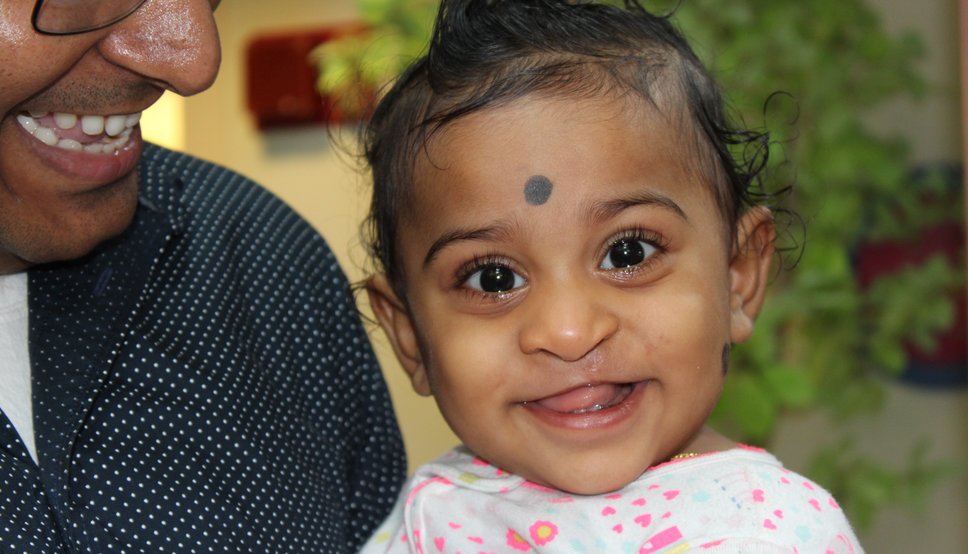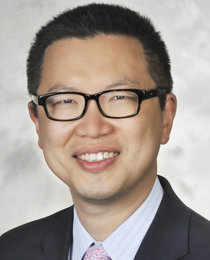Cleft Lip and Palate: Signs and Treatment

Cleft lip and cleft palate are the most common birth defects involving the head and neck, and the second most common overall. In the United States, up to 20,000 babies are born with cleft lip or cleft palate each year.
What is cleft lip? What is cleft palate?
The word cleft means split, so the terms “cleft lip” and “cleft palate” describes a split in the lip or palate. The palate is the upper part, or roof, of the mouth. Babies born with a cleft lip have a split in the upper lip that can extend all the way to the nose. Babies born with a cleft palate have an opening in the roof of the mouth. Many babies with this disorder have both a cleft lip and palate, with a split extending all the way from the lip and nose into the back of the throat. Others may be born with only a cleft lip or cleft palate.
Babies born with these conditions can live normal and healthy lives. Treatment of these conditions is best when started at a young age. However, it is never too late to seek care. Even older adults can have their clefts repaired.
What causes cleft lip or cleft palate?
These splits in the lip or palate are created when the baby’s lip or mouth do not form properly during pregnancy. The exact cause of cleft lip and cleft palate are not known, though genetics is thought to play a factor. The CDC reports that certain factors may increase the chance of having a baby with a cleft lip or palate, including:
- Smoking
- Diabetes
- Use of certain medicines
Women who are pregnant or thinking about becoming pregnant should speak with their doctors about lifestyle changes they can make to increase the chances of having a healthy baby.
Can a cleft lip or palate be diagnosed before birth?
A routine ultrasound can diagnose cleft lip during pregnancy. Cleft palate may or may not be diagnosed by an ultrasound, but can be identified after the baby is born. Some types of cleft palate that are not visible in the mouth may not be diagnosed until later in life.
What problems can a cleft lip or cleft palate cause?
Babies born with cleft palate in particular can initially have difficulty with breast feeding. Later, they may have difficulties with speech as well. Ear problems are also common. Babies may fail their newborn hearing test, not because they are deaf but because there is some extra fluid in their ears. These issues can be treated easily if managed by the appropriate doctors, who specialize in taking care of children with cleft. If not treated appropriately, these issues can turn into permanent problems with speech and hearing.
Children with cleft lip and palate can also have problems with their teeth. Because of this, it is important for them to see expert pediatric dentists and orthodontists to help straighten their teeth.
The good news is that with appropriate care, children with cleft lip and/or palate can expect to have completely normal lives with a good facial appearance and speech. Many people don’t even realize when they have met a person who was born with a cleft. In fact, there are several well-known actors and actresses who were born with clefts of the lip and/or palate.
What is the treatment for a cleft lip or cleft palate?
Cleft lip and cleft palate are treated with surgeries that happen at a very early age. These babies are evaluated by a team of pediatric experts, including dentists, speech therapists, plastic surgeons, and ear, nose, and throat doctors. Cleft lip repair typically happens before the baby is six months old, and cleft palate repair is done between 12 and 18 months. They may also need additional surgeries when they get older to optimize their appearance and function. This includes fixing a gap in the gums, helping with speech problems, or improving the appearance and function of the nose. As children born with cleft lip or cleft palate age, they are assessed by speech therapists, ENT doctors, and other experts to determine what additional help may be needed. It is also good to know that someone is never too old to have surgery for a cleft disorder. Our specialists even take care of adults who have lived with this problem for many years and are finally ready to have it fixed.
The experts at the Cleft and Craniofacial Center of Hasbro Children’s Hospital have treated thousands of children and adults with cleft lip, cleft palate, and other craniofacial anomalies since the 1960s. Learn more about how we treat cleft lip and cleft palate on our website.

About the Author:
Albert S. Woo, MD
Dr. Albert S. Woo, FACS, is a board-certified plastic and reconstructive surgeon who has over a decade of experience in the specialized team care of patients with craniofacial anomalies and cleft deformities. He is the Chief of Pediatric Plastic Surgery and Director of the Cleft and Craniofacial Center at Hasbro Children’s Hospital.
Lifespan Living Newsletter
Find a Doctor

The right provider is in our network
Search more than 1,200 providers in our network.



